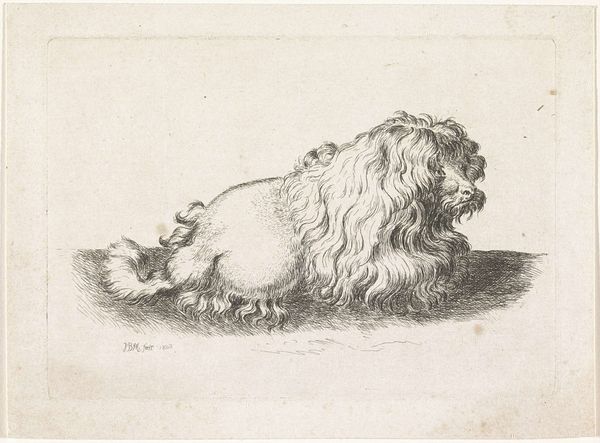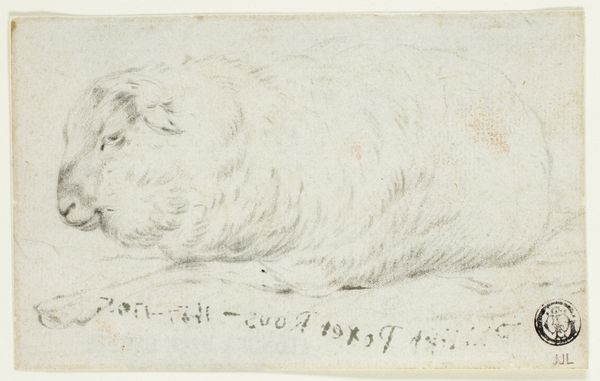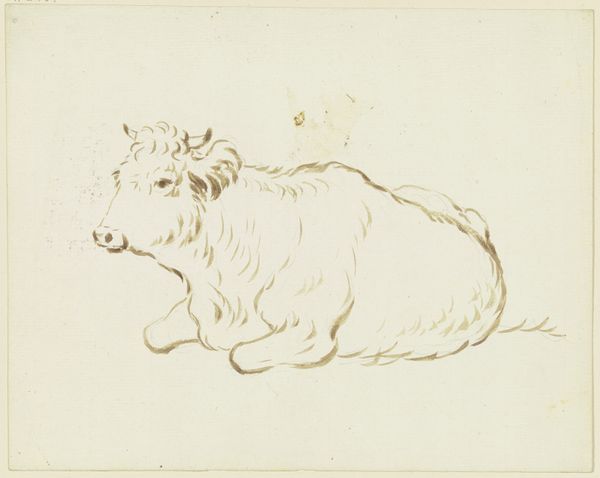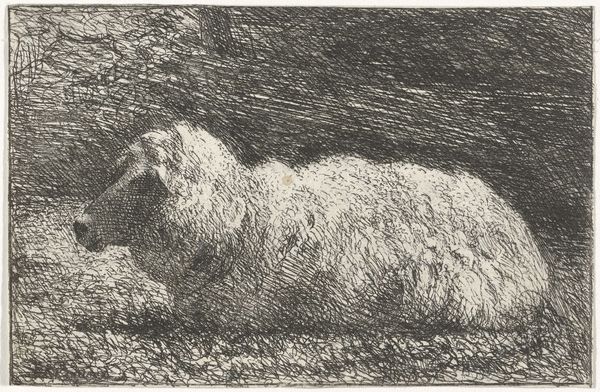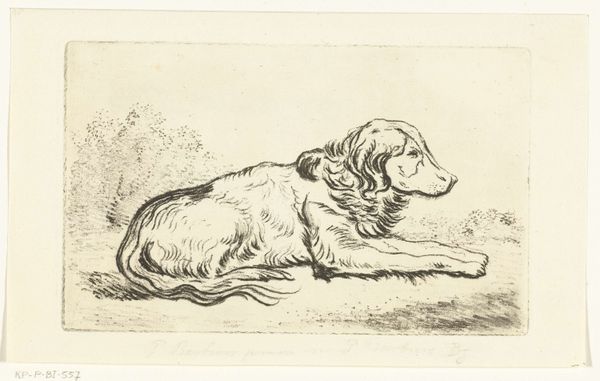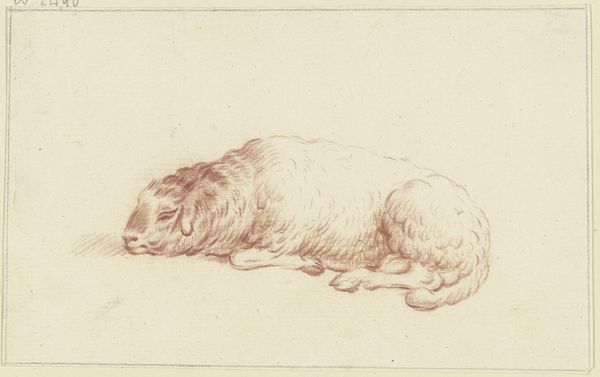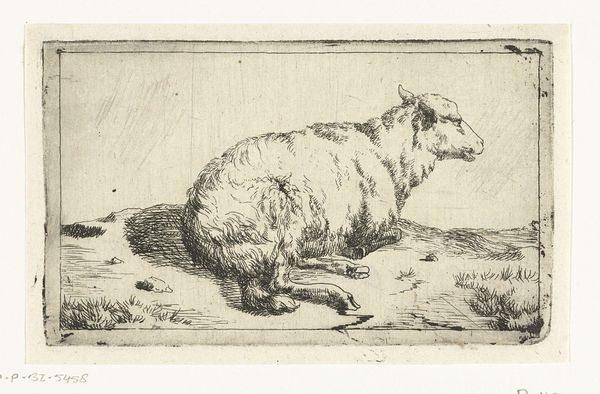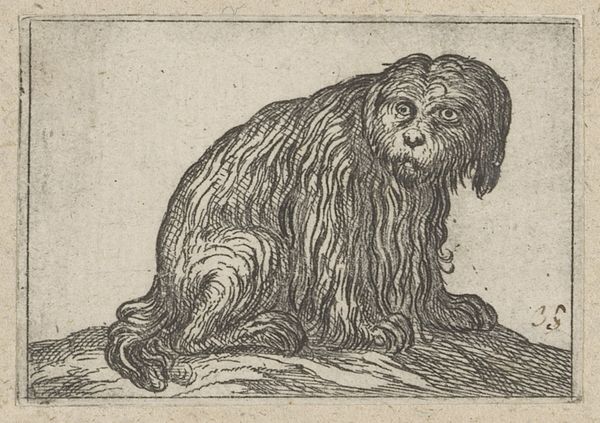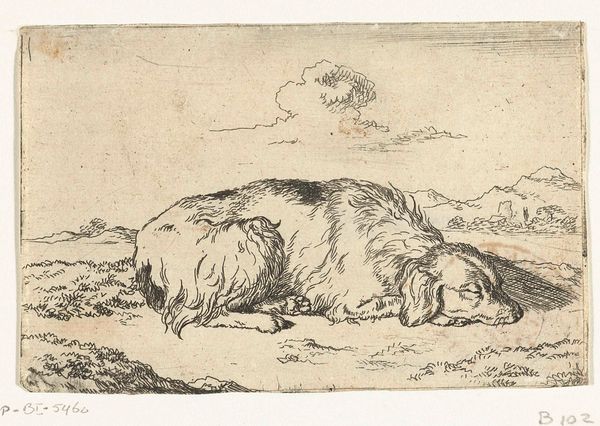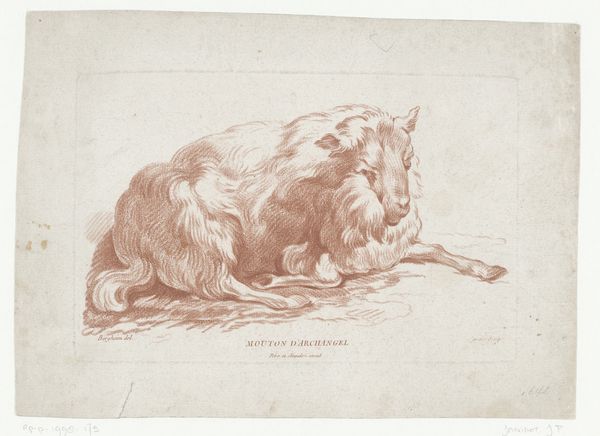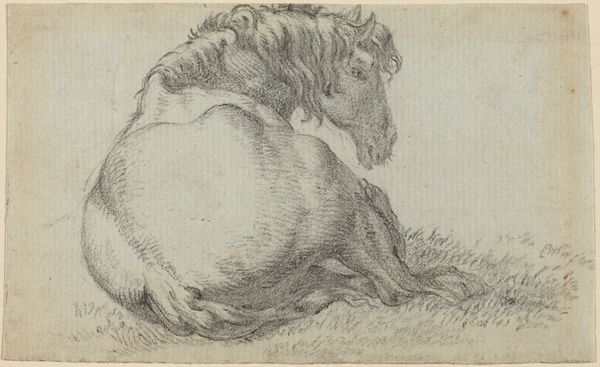
drawing, print, engraving
#
portrait
#
drawing
#
baroque
# print
#
dog
#
engraving
#
realism
Dimensions: Plate: 3 1/16 × 4 3/4 in. (7.8 × 12.1 cm)
Copyright: Public Domain
Curator: Welcome. Before us is Wenceslaus Hollar’s "White Dog," created in 1649. It's an engraving, a meticulous print currently housed at the Metropolitan Museum of Art. Editor: My initial reaction is to its sheer texture. Look at the incredible detail rendered simply with line and tonal variation. It almost seems… tactile. Curator: The composition certainly draws the eye to the varying textures. Hollar masterfully uses hatching and cross-hatching to delineate form and suggest light interacting with the dog’s coat. Consider how the precise engraving technique elevates this common animal to a dignified subject. Editor: But it also emphasizes labor. Hollar’s commitment to recording every hair, every ripple of fur, implies a deliberate, time-intensive engagement. Was this level of detail typical for animal portraits? Was there a specific market for such highly rendered images, or perhaps a patron who valued Hollar's precision and investment of his time and skills? Curator: Good questions. The baroque period favored elaborate displays of skill, and Hollar, renowned for his topographical prints and meticulous details, applies that same discipline here. He flattens the pictorial space, concentrating the focus entirely on the dog's form. Notice how it becomes an object of study, almost scientific in its scrutiny. Editor: I find it revealing how the labor is foregrounded. It brings up broader issues of artistic production and class, perhaps even challenging the distinctions between decorative arts and the traditional hierarchy that relegated them below "high" art. Was the dog itself, perhaps, a symbol of status attainable only through specific modes of ownership and care, visualized through a laborious technique? Curator: An insightful reading. Focusing on form, however, one appreciates the visual harmony achieved despite the density of detail. The lines curve and flow, leading the viewer through the animal’s posture with an almost musical rhythm. Editor: Precisely. Looking beyond the formal elements of the image, this image prompts reflection about its production and the complex system it came from. Curator: Ultimately, Hollar's "White Dog" compels us to reconcile our contemporary gaze with its historical and material origins, revealing both its artistic intention and historical setting. Editor: Indeed, and reminds us of the profound social meanings inherent in materials, manufacture, and artistic exchange.
Comments
No comments
Be the first to comment and join the conversation on the ultimate creative platform.
